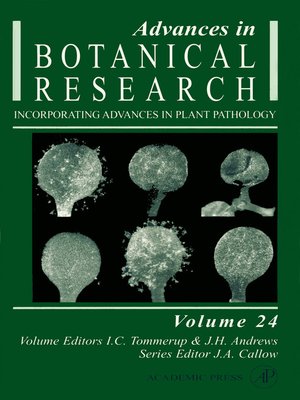
Sign up to save your library
With an OverDrive account, you can save your favorite libraries for at-a-glance information about availability. Find out more about OverDrive accounts.
Find this title in Libby, the library reading app by OverDrive.



Search for a digital library with this title
Title found at these libraries:
| Library Name | Distance |
|---|---|
| Loading... |
Articles in this volume analyze rapidly evolving approaches, many at the cusp of development, to research plant defense mechanisms, pathogen variability, and epidemiology. Jones and Jones focus on emerging patterns that key resistance genes encode or require leucine-rich repeat proteins. Holub and Beynon analyze associating host resistance specificity with a locus and whether a phenotype is due to single or multiple genes. Ashby combines biochemical, molecular, and classical plant pathology to analyze interactions and provide leads to novel control strategies. Heath and Skalamera question why fungal biotrophs form intracellular structures, the significance of ensuing cellular rearrangements and death of invaded resistant cells. Spencer-Phillips explores the roles of haustoria and intercellular hyphae in intercepting organic and inorganic nutrients from hosts.Chamberlain and Ingram compare pathogen asexual and sexual reproduction for generating genetic variation, physiological and fitness costs and trade-offs. Hardham and Hyde consider new knowledge of sporangiogenesis and zoospore production in oomycetes. Dewey et al. analyze recent advances in accurately enumerating pathogens in soil. Wistemeyer et al. consider opportunities for horizontal gene transfer amongst microbes and plants in soil. Irwin et al. discuss origins of genetic variationof Phytophthora pathogens of pasture legumes. Rodriguez and Redman show how prominent pathogens which also behave as endophytes or saprophytes may influence plant community structure and dynamics. Haubold and Rainey challenge us to consider geneticvariation in plant-colonizing bacterial populations. Milgroom and Fry demonstrate that the practical need to understand pathogen variation is the most significant application of population genetics to disease management.







